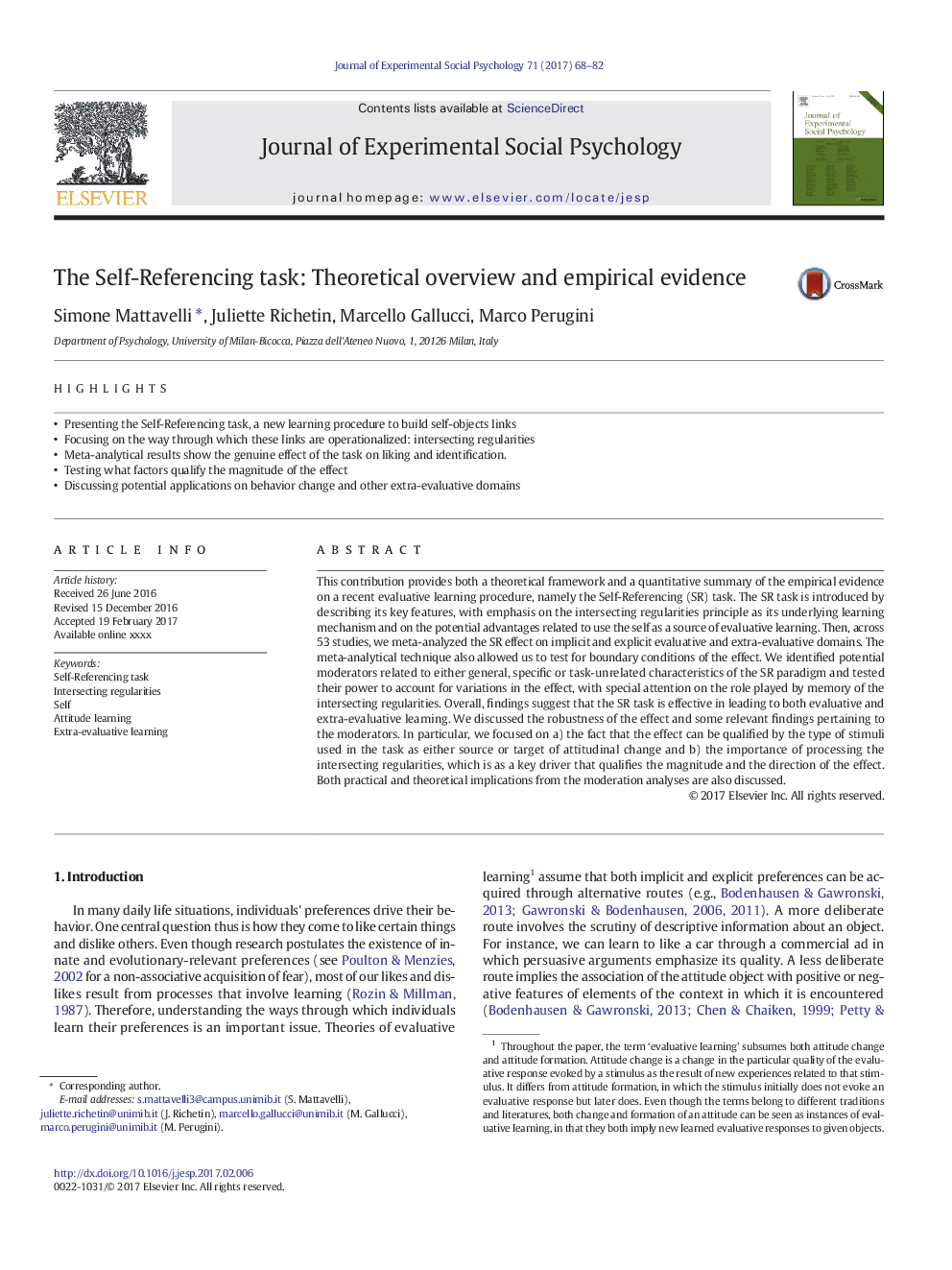ترجمه فارسی عنوان مقاله
وظیفه خود ارجاع: نظریه نظری و شواهد تجربی
عنوان انگلیسی
The Self-Referencing task: Theoretical overview and empirical evidence
| کد مقاله | سال انتشار | تعداد صفحات مقاله انگلیسی |
|---|---|---|
| 118741 | 2017 | 15 صفحه PDF |
منبع

Publisher : Elsevier - Science Direct (الزویر - ساینس دایرکت)
Journal : Journal of Experimental Social Psychology, Volume 71, July 2017, Pages 68-82
ترجمه کلمات کلیدی
وظیفه خود ارجاع، قوانین متقاطع، خود، یادگیری نگرش، یادگیری اضافی ارزیابی
کلمات کلیدی انگلیسی
Self-Referencing task; Intersecting regularities; Self; Attitude learning; Extra-evaluative learning;

